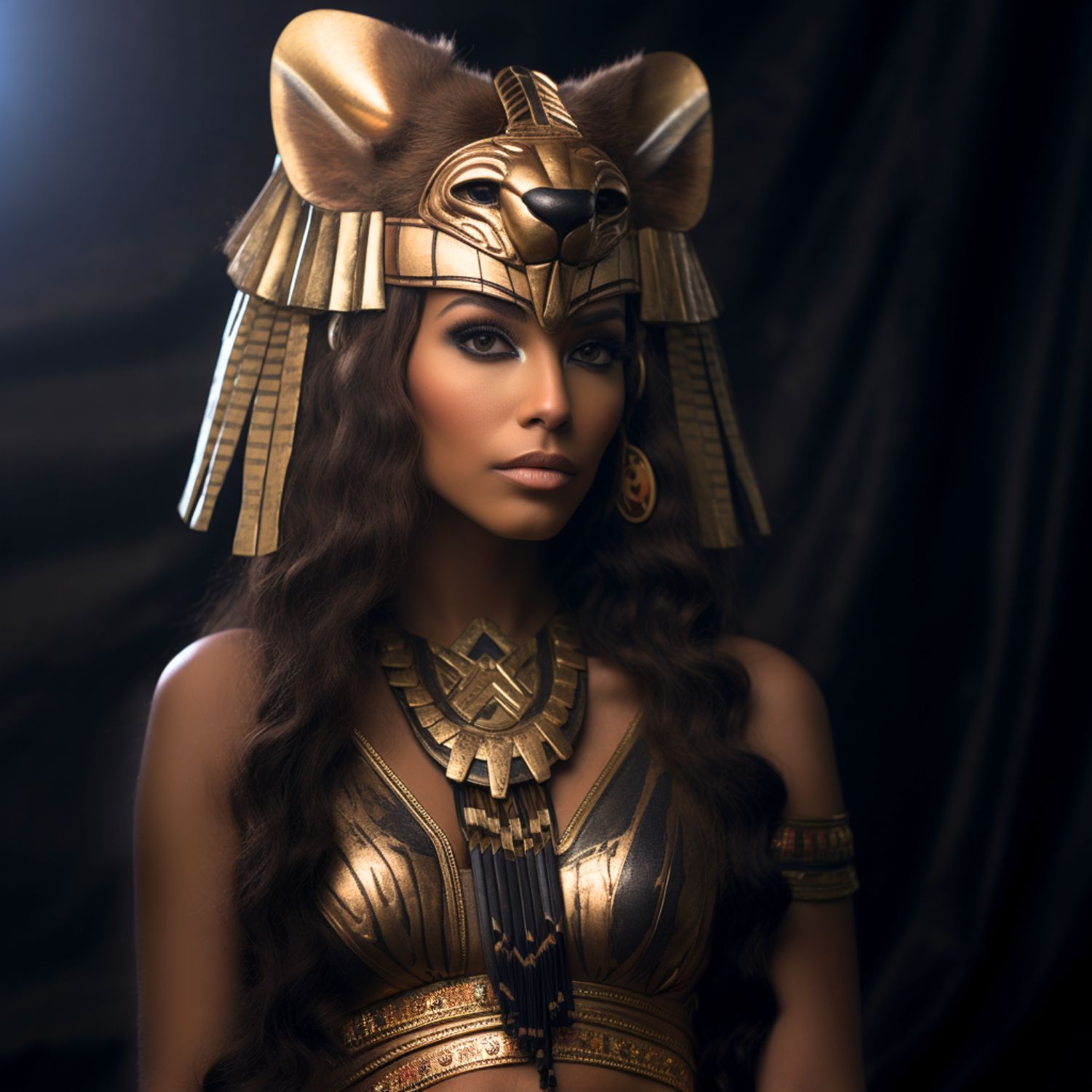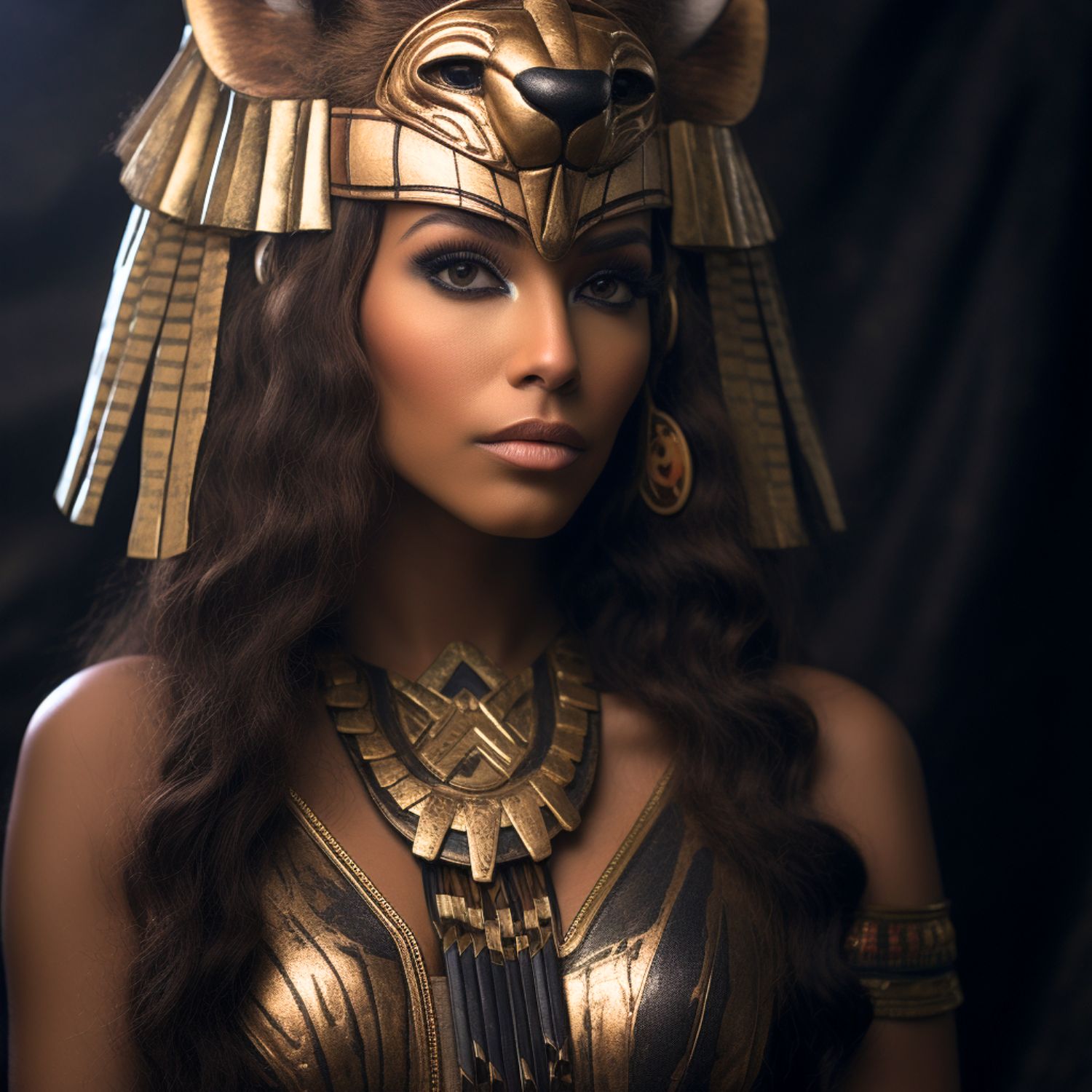Summary
The Origin and Significance of Sekhmet
Sekhmet’s history dates back to Ancient Egypt as one of the oldest and most powerful goddesses. Her name means “the powerful one,” and she often appears as a lioness, a symbol of strength and courage. The Egyptians worshipped Sekhmet as a warrior goddess and the protector of the pharaohs. She held dual roles involving healing and destruction. In times of war, they believed Sekhmet could unleash chaos on their enemies. Conversely, in times of peace, she could ward off diseases and bring about healing. Her festival was a time of reflection and appeasement, as her followers sought to calm her fierce temperament. This duality made the Egyptian God Sekhmet a complex deity, embodying the dichotomy of creation and destruction inherent in life.
Get your dose of History via Email
Cultural Impact and Worship Practices
The worship of Sekhmet was prominent, with numerous temples dedicated to her honor. The most significant being at Memphis, where a massive statue stood as a testament to her influence. Priests performed daily rituals to appease her wrathful nature. These rituals were critical to maintaining balance within the kingdom. Sekhmet’s priests were also skilled in medicine, drawing on her healing aspects. They crafted remedies and incantations, which reflected the goddess’s power to cure illnesses. Part of her enduring legacy is the connection between spirituality and medicine in ancient Egyptian culture. Even today, Sekhmet’s figure captivates people, symbolizing empowerment and the complexities of the natural world.
Sekhmet: Warrior Goddess and Healer
In the pantheon of ancient Egyptian deities, Sekhmet holds an esteemed position. Her name, translating to “the Powerful One,” reflects her dual nature as a warrior goddess and a healer. Sekhmet’s depiction with the head of a lioness and the body of a woman is symbolic of her fierce protectiveness and nurturing care. As a deity of war, she was a defender of pharaohs and led them in battle, embodying the ferocious strength needed to maintain order and vanquish enemies of the state. Yet, Sekhmet’s powers extended beyond the battlefield. She was also revered for her ability to bring about healing, using her fierce energy to drive out disease and illness.
The Fierce Protector
Beloved as a protector of the pharaohs, Sekhmet’s legend was synonymous with safeguarding the land of Egypt. Her prowess in combat was unrivaled, ensuring the peace and stability of her peoples’ realm. Followers of Sekhmet would often invoke her vigilance to ward off evil spirits and calamities. Her role extended to executing justice, thereby cementing her status as a guardian deity. Festivals in her honor celebrated her might and the protection she offered to the Egyptians. Her temples served not just as places of worship but as sites of safety and reassurance for those seeking her favor and divine intervention.
The Healing Touch of Sekhmet
Sekhmet’s influence was not limited to acts of war; she was equally potent in peace. As a healer, her capabilities were vast and profound. Ancient Egyptians believed that by appeasing Sekhmet, they could prevent plagues, reinforcing her stature as a deity who held sway over health and well-being. Physicians of the time were known as “priests of Sekhmet,” reflecting the divine inspiration behind their medical practices. Her healing powers were celebrated in rituals and through the arts of medicine, intertwining spirituality and healthcare in ways that lasted for centuries and influenced the medical traditions that followed.
The Festival of Drunkenness: Honoring Sekhmet’s Dual Nature
Reviving Ancient Rituals
Every year, a unique celebration unfolds along the Nile River, resurrecting an ancient Egyptian tradition. It is the Festival of Drunkenness, a festivity steeped in both reverence and revelry, dedicated to the goddess Sekhmet. This festival rekindles the stories and practices of a time long gone, drawing participants from far and wide. They gather to pay homage to Sekhmet’s duality, as both a destroyer and a protector, a healer and a warrior. In rituals brimming with dance, music, and symbolic feasts, celebrants delve into a night of controlled chaos, guiding them to a deeper understanding of balance and transformation.
Sekhmet’s Mythic Might
The lioness-headed deity Sekhmet, ferocious and majestic, commands power over both disease and health. Her name itself means ‘The Powerful One,’ echoing her role within the pantheon. In vivid tales, she is said to have almost eradicated humankind in a fury, only to be appeased by dyed beer resembling blood. This narrative forms the backbone of the festival’s main event. Here, attendees mimic the ancients, imbibing generously to connect with Sekhmet’s fierce spirit. They recall her mercy and healing through intoxication, finding solace in her protective might. The festivity deciphers her complexities, illuminating human frailties and strengths alike.
Celebration as a Path to Enlightenment
Embracing the ebbs and flows of life, the participants of the Festival of Drunkenness immerse themselves in the dual essence of celebration. They view the act of sharing drinks not merely as merriment, but as a symbolic enactment. The revelry thus becomes a quest for wisdom, with each pour, chant, and dance step channeling Sekhmet’s transformative energies. It’s an invitation to explore the boundaries of self, a festive reminder that one can find enlightenment even in the heart of revelrous mirth. This event binds the community in a collective journey where joy resonates, and the teachings of the past enlighten the present.

Iconography of Sekhmet: Depictions and Symbolism
The Lioness Warrior: Visualization of Power
Sekhmet, the ancient Egyptian goddess, exemplifies strength and ferocity. She is portrayed as a lioness or as a woman with the head of a lioness, often wearing a red dress, symbolizing her warrior aspect. Her depictions, found in temple walls and artifacts, are not just works of art but are deeply rooted in the culture’s reverence for divine power. Sekhmet’s iconography represents royal might and the fierce heat of the sun. She holds an ankh and a papyrus scepter, illustrating her dual role as both destroyer and healer.
Pursuing the Historical Chronology: Dating the Imagery
The dating of Sekhmet’s iconography is key to understanding her worship across different eras. Techniques, such as stratigraphy and radiocarbon dating, help place her statues and images within Egypt’s dynastic timeline. While some methods are direct, others are inferential, using the context of archaeological sites to estimate the age. These methods reveal that her veneration likely peaked during the time of Amenhotep III, who erected numerous statues of Sekhmet to ward off illness.
Cultural Resonance of Sekhmet’s Symbolism
Sekhmet’s iconography carries profound cultural significance. Interpretations suggest that Sekhmet’s duality as protector and punisher reflects the Egyptians’ understanding of balance, known as Ma’at. Her image served to remind the people of the consequences of ethical lapses while simultaneously offering the promise of healing. Theories propose that her depictions were not just symbolic but also served a functional purpose in rituals, acting as conduits to invoke her presence and blessings.
For further reading and to validate the information presented in this article, the following sources are recommended:

